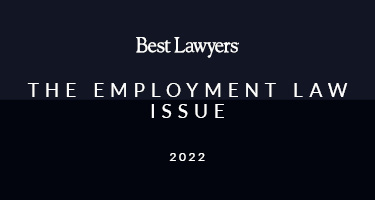Workers’ compensation seems straightforward: employers provide coverage, injured employees receive benefits—case closed. Yet any lawyer who’s handled workers’ comp knows this simplicity is deceptive.
Beneath its seemingly routine nature, workers' compensation hides complexities that frequently ensnare even seasoned practitioners.
Variations in state mandates, overlapping obligations with disability and employment laws, and evolving definitions of eligibility and causation all combine to create a landscape ripe with strategic challenges—and opportunities—for attorneys.
Core Principles and Hidden Complexities of Workers' Comp
Workers’ compensation laws mandate employers carry insurance to cover employees’ work-related injuries, except in Texas. Employers gain immunity from traditional negligence-based lawsuits through the compulsory coverage. Yet beneath this seemingly straightforward models lies a web of legal intricacies.
This "no-fault" framework streamlines the claims process, providing injured workers swift medical and financial support. Yet, this straightforward description masks complexities that can rapidly spiral into legal quagmires for attorneys unfamiliar with the nuanced details of workers' compensation systems.
One key source of complexity arises from the significant variability across state lines. Because state law primarily governs workers’ comp, similar injuries can lead to dramatically different outcomes depending solely on geography.
The discrepancies don’t stop at payment levels. States also differ substantially regarding the duration and extent of benefits, the required procedures for medical evaluations, and even standards for medical treatment itself. This lack of uniformity creates strategic opportunities—and pitfalls—for practitioners representing employers or employees who operate across multiple jurisdictions.
Blurred Lines
Another layer of complexity involves who qualifies for coverage at all. Historically straightforward, the modern employment landscape has blurred the lines considerably.
Independent contractors, gig workers, domestic employees, and agricultural workers often face significant barriers to workers' compensation coverage. In states like Massachusetts, recent court battles have centered precisely on this issue—whether gig economy companies like Uber, Lyft, or DoorDash must extend workers’ compensation coverage to their drivers.
These legal battles highlight the contentious, evolving interpretations of employment relationships and signal that practitioners must remain vigilant as definitions and standards shift.
The misclassification of employees as independent contractors doesn't just affect workers—it has profound implications for employers as well. Incorrect classifications can lead to substantial retroactive liabilities, including unpaid premiums, regulatory penalties, and increased scrutiny from state authorities.
Attorneys advising companies must thoroughly audit and regularly update workforce classifications, especially as regulatory landscapes evolve, to avoid significant financial exposure and reputational damage stemming from compliance failures.
How to Navigate Workers' Compensation
Strategically, lawyers must also navigate subtle and complicated eligibility disputes, where causation questions can make or break a claim.
An injury that seems work-related on its face may be fiercely contested. For example, repetitive stress injuries, psychological trauma, and chronic conditions exacerbated by work often become hotly debated claims.
These cases demand meticulous attention to medical documentation, witness testimony, and expert medical opinions, as the standard of proof—while lower than traditional negligence cases—is far from automatic.
For instance, psychological injuries such as workplace-induced PTSD or chronic stress are notoriously difficult to establish as compensable claims.
Attorneys must often lean heavily on psychological expert testimony, precise employment histories, and detailed symptom tracking over time to establish causation clearly.
Such meticulous preparation not only strengthens claims but also positions attorneys strategically during settlement discussions or when navigating mediation processes.
Attorneys representing employers must carefully manage delicate triadic relationships involving employers, insurers, and injured workers. Employers often seek to contain costs and minimize disruption, insurers rigorously scrutinize claims to avoid fraud and unnecessary expenses, and injured workers demand fair, swift compensation.
Attorneys must balance these competing interests, providing strategic counsel to employers on risk mitigation while safeguarding employees’ legitimate rights to compensation.
Intersection With Disability and Employment Law
Workers’ compensation doesn't exist in a vacuum. Instead, it frequently intersects—and clashes—with state and federal disability discrimination laws, such as the Americans with Disabilities Act (ADA) and state-specific statutes like California’s Fair Employment and Housing Act (FEHA).
While workers' comp laws and disability statutes share common ground in protecting injured workers, their distinct legal frameworks and obligations often lead to complex, strategic dilemmas for lawyers representing either employers or employees.
While workers' comp provides immediate benefits without requiring fault, disability laws mandate employers proactively provide reasonable accommodations for impairments that substantially limit major life activities.
Unlike workers’ comp's task-oriented impairment ratings, disability discrimination statutes adopt a broader, functional standard. This definitional divergence means employees rated partially disabled under workers' comp may retain significant legal rights under disability discrimination laws—rights that extend far beyond workers' comp coverage.
These differing standards can create complicated obligations for employers and significant strategic leverage points for employee-side attorneys. For example, an employer who fully complies with workers' comp by providing temporary modified duties to an injured employee may mistakenly believe their legal obligations have ended when workers' comp benefits terminate.
Yet, under ADA or FEHA, the employer still has a continuing, affirmative obligation to explore reasonable accommodations beyond temporary assignments—even including permanent modified roles or reassignment, if feasible. Employers who fail to recognize this ongoing duty risk costly litigation under discrimination statutes.
What Employers Need to Know
Employers must engage in a good-faith, interactive process with the employee—clearly documented and responsive—to determine reasonable accommodation options.
This process might include permanent modified duty roles, flexible scheduling, assistive technology, or reassignment to a vacant position.
Courts have increasingly scrutinized whether employers have genuinely engaged in this dialogue or simply performed superficial evaluations, creating an important strategic consideration for attorneys advising employer clients.
Consider a hypothetical scenario: an employee injures her back on the job, triggering workers' comp benefits. After reaching maximum medical improvement, she can lift only 25 pounds—down from the 50 required in her original position. Workers' comp may award permanent partial disability benefits and conclude the employer fulfilled their responsibilities.
But under the ADA, the employee still maintains rights. If the employer refuses to explore a reasonable accommodation, such as reassignment or permanent modification of job duties—even after workers' comp obligations conclude—they've now stepped squarely into ADA violation territory.
Walking on a Thin Line
In multiple jurisdictions, courts have found employers liable for disability discrimination despite their strict compliance with state workers' comp laws.
A noteworthy example is EEOC v. Sears, Roebuck & Co., where the company settled for $6.2 million due to ADA violations stemming from rigid workers' comp policies that failed to offer reasonable accommodations.
Such cases illustrate vividly that relying exclusively on workers’ comp standards without considering ADA obligations can quickly become an expensive oversight.
So how can attorneys navigate this overlapping and often conflicting landscape?
Best Practices
For those advising employers, best practices include establishing clear internal protocols distinguishing workers’ comp obligations from ADA and FEHA responsibilities.
Employers should be encouraged to engage proactively and transparently in interactive accommodation dialogues, clearly documenting their efforts to accommodate employees with lasting restrictions—regardless of workers' comp status.
Employer-side attorneys should routinely conduct training sessions with HR teams to reinforce proper accommodation practices and clarify the company's continuing obligations under the ADA and similar statutes.
Consistent training and clearly documented policies not only minimize litigation risks but also demonstrate good faith in the event of disputes.
Employee-side lawyers, meanwhile, can use these dual obligations strategically, pressing employers who neglect ADA compliance following the end of workers’ comp benefits. By carefully documenting employer missteps in accommodation dialogues or job reassignments, attorneys can leverage these claims to negotiate settlements that account fully for both workers' comp and discrimination claims, potentially significantly increasing recovery for injured clients.
Employee-side attorneys should also educate their clients early in the process about documenting interactions related to accommodation requests. Careful documentation by employees—emails, medical records, notes from conversations with HR—can dramatically enhance the strength of discrimination claims or negotiation positions in dual-obligation scenarios.
Strategic Opportunities for Lawyers in Workers’ Comp
Workers’ compensation may appear straightforward at first glance, but the underlying complexities and intersections with disability and employment law demand strategic vigilance. For modern legal practitioners, mastering these nuances is essential.
Staying ahead of evolving legal interpretations, jurisdictional variability, and the fluid definitions shaping coverage and accommodation obligations equips attorneys with critical advantages. It means better advocacy for injured workers, informed counsel for employers seeking compliance, and significantly improved litigation and negotiation outcomes.
Workers' comp is not static. Ongoing debates—such as gig economy coverage, remote workplace injuries, and the shifting standards of disability law—require attorneys to continuously recalibrate their approaches. Lawyers who treat workers’ comp as a static, routine practice area risk overlooking substantial strategic opportunities and may unwittingly expose clients to costly liabilities.
Instead, lawyers should proactively question established assumptions, routinely update their understanding of jurisdictional differences, and embrace the strategic potential embedded in the intersection of workers' comp and disability laws. Following this approach, lawyers transform what some dismiss as merely procedural law into a dynamic field offering sophisticated advocacy opportunities.

































